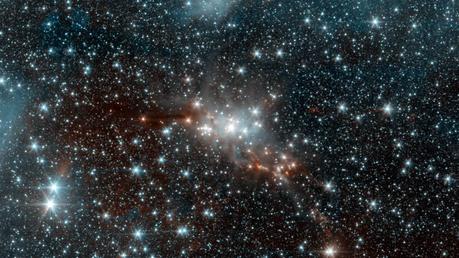There's really no definitive answer to this question. No one has counted all the stars in the night sky, and astronomers use different numbers as theoretical estimates.

The number of stars you see in the night sky depends on several variables, including your location's light pollution and your own vision. In large, light-polluted cities, only a few dozen of the brightest stars may be visible - though that doesn't mean there's nothing to observe from a city. But in a clear, dark sky, a couple thousand stars become visible to the unaided eye. The sheer size of space makes it impossible to accurately predict just how many stars we have. Right now, scientists and astronomers use the number of stars only within our galaxy, The Milky Way, to estimate. That number is between 200-400 billion stars and there are estimated to be billions of galaxies so the stars in space really are completely uncountable. A star is a luminous ball of gas, mostly hydrogen and helium, held together by its own gravity. Nuclear fusion reactions in its core support the star against gravity and produce photons and heat, as well as small amounts of heavier elements. The Sun is the closest star to Earth. According to current star formation theory, stars are born as clumps within gigantic gas clouds that collapse in on themselves. The cloud's material heats up as it falls inward under the force of its own gravity. A star's color relies on its temperature: hotter stars emit bluer light and cooler stars emit redder light. Temperature is also correlated to mass. Red dwarf stars have as little as 0.075 solar masses and a visible surface temperature less than 4,000 K. The most massive star known is R136a1, a Wolf-Rayet star 265 times the Sun's mass - its visible surface temperature hovers at a searing 50,000 K. Stars are cosmic energy engines that produce heat, light, ultraviolet rays, x-rays, and other forms of radiation. They are composed largely of gas and plasma, a superheated state of matter composed of subatomic particles. Though the most familiar star, our own sun, stands alone, about three of every four stars exist as part of a binary system containing two mutually orbiting stars. Young stars at this stage are called protostars. As they develop they accumulate mass from the clouds around them and grow into what are known as main sequence stars. Main sequence stars like our own sun exist in a state of nuclear fusion during which they will emit energy for billions of years by converting hydrogen to helium. A few stars eschew this evolutionary path and instead go out with a bang-detonating as supernovae. These violent explosions leave behind a small core that may become a neutron star or even, if the remnant is large enough, a black hole.
http://www.blogadda.com/rate.php?blgid=57941